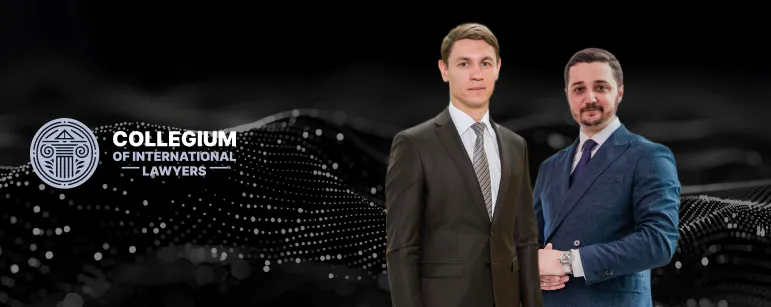
OFAC SDN List Removal
The Specially Designated Nationals (SDN) list, maintained by the U.S. Office of Foreign Assets Control (OFAC), includes individuals, organizations, and companies subject to U.S. sanctions. Being placed on this list can have serious consequences for both individuals and entities, as it freezes their assets and restricts their access to financial markets.
Thanks to their experience and deep knowledge in dealing with the field of foreign policy, national security, and sanctions programs and laws acting on behalf and against entities and organizations, our lawyers will help you navigate this process and protect your interests by acting on behalf of the foreign policy, national security, and acting on behalf of national security international sanctions programs and sanctions stage acting against entities and organizations.

What is the OFAC SDN list?
The term “SDN” stands for Specially Designated Nationals, which refers to individuals, terrorists, and organizations and entities specifically identified by the U.S. government. The list of sanctions includes not just individuals and terrorists but also other persons, companies, other organizations, and other entities and even government institutions, persons, national security, foreign policy, organizations sanctions programs, and entities that are subject to U.S. sanctions due to various offenses such as terrorism, the proliferation of weapons of mass destruction, corruption, drug trafficking, and similar activities.

Main functions of the SDN list
- Freezing of assets. All assets of individuals and companies that fall under the SDN list are frozen. No person or organization within the US can carry out financial transactions with individuals or companies on this list.
- Trade operation restrictions. American companies are prohibited from doing business with those on the SDN list. This fact significantly complicates international trade for such entities.
- Fighting Global Threats. The primary goal of the list is to protect U.S. national security and counter global threats such as terrorism, corruption, and human rights abuses. The SDN list is a crucial tool in combating the financing of terrorism and other illicit operations.
How can you be removed from the SDN list?
When the OFAC adds an entity, foreign or national security or foreign policy,, or person to the sanctions list or the SDN list, it publishes a page of explanatory information that outlines the reasons for such a decision. Typically, the reasons for addition can be found in the reports that the Treasury Department provides when announcing sanctions. These grounds need to be carefully analyzed to prepare a petition for the removal of the organization, foreign or national security or foreign policy, country, foreign or national security or foreign policy,, or person from the sanctions list.
To get sanctions programs against your country removed from the sanctions SDN list, you need to submit a petition to OFAC. It’s crucial in most ofac documents to prove that the whole ofac entity’s activities and sanctions programs have changed and there will be no future violations of sanctions programs. It’s also important to show that the entity has ceased all actions that could have been subject to sanctions due to the sanctions programs and that any past mistakes in sanctions programs have been corrected.
Removal of a person or names on the person blocked persons list is also possible if one person can provide evidence that the name of a person being added to the SDN name or person blocked persons list was a mistake. The review process for the person of nationals and blocked persons list can take a long time, from several months to several years, depending on the complexity of the person blocked persons list and person blocked persons list’s country or case.
Steps in the SDN List Removal Process
Being placed on the SDN (Specially Designated Nationals) list has serious repercussions for individuals and companies hit with sanctions. However, there is a possibility for removal from the SDN list under certain conditions.
- Filing a petition with OFAC. This is an official document where an individual or company provides justification for their removal from the list. The petition must include arguments explaining why the sanctions are no longer justified.
- Providing evidence. Evidence can include changes in corporate governance, cessation of activities that led to sanctions, or other events indicating a lack of risk to U.S. security.
- Review of the Petition and Investigation. After a petition is submitted, OFAC conducts a comprehensive review of the case and may request additional information or clarification. The organization checks whether the circumstances that led to the imposition of sanctions have indeed changed and no longer provide a basis for their continuation.
- Decision Making. After reviewing the petition and concluding the investigation, OFAC decides whether an individual or organization can be removed from the SDN list. If the decision is positive, it means that all sanctions are lifted, and assets are no longer frozen. In case of a denial, a new petition can be submitted after addressing the reasons that led to the initial refusal.
Common Mistakes Leading to Inclusion on the SDN List
One of the most common reasons for persons or entities being placed on the SDN list is conducting business with designated nationals and blocked persons, entities or individuals, groups of such designated nationals and blocked persons, other such designated nationals and blocked persons list others or specially designated nationals and blocked persons or others, terrorists and blocked terrorists, persons, entities, organizations, or companies that are already under OFAC or sanctions programs. Insufficient due diligence on business partners, especially foreign policy, when dealing in international markets, can lead to a a person or company unintentionally collaborating or dealing with sanctioned persons or entities.
Another common mistake is participating in sanctions programs against prohibited transactions. Some companies, groups or individuals may not realize that certain deals or financial operations violate sanction requirements. For example, sanctions programs against transactions or dealing with entities, organizations or companies in countries that are under U.S. sanctions, or sanctions programs against deals or dealing with entities, organizations, entities or individuals linked to terrorist organizations.
Sometimes ofac, companies in ofac, groups in ofac, or individuals in ofac might end up on the SDN sanctions list due to mistaken identity. This can happen if a person in ofac or an ofac organization shares a similar name with someone already under the sanctions list. In such cases, it’s crucial for OFAC to act quickly to provide OFAC with the appropriate evidence and correct the mistake.
Even if a company has developed internal national security and policies to comply with OFAC requirements, non-compliance can lead to violations and sanctions. It’s important for organizations not only to develop effective national security procedures but also to ensure that all employees are properly trained and adhere to these same national security and rules.
Legal grounds for removal from the SDN list
Removal from the SDN list is possible if there are legal grounds for it. To successfully navigate the process, it’s crucial to strictly adhere to OFAC requirements and prepare all necessary evidence. Legal support at this stage is a key factor in achieving a positive outcome.

Let’s examine the key legal grounds for removal from the SDN list:
- Mistaken identity: an individual or company was added to the list due to incorrect identification or wrongful association with sanctioned entities;
- Changes in circumstances: for example, if a company has severed any ties with sanctioned organizations or individuals, this could be grounds for reviewing its status on the list;
- Implementation of corrective measures: The individual or company has addressed all the violations that were the basis for imposing sanctions (changes in management or ownership structure, discontinuation of certain types of activities);
- Rectifying previous violations: may involve both financial and legal obligations;
- Petition to OFAC: The petition should include well-reasoned arguments for removal from the SDN list and contain evidence supporting the claim that there are no longer grounds for remaining on the list.
How our lawyers can help with removal from the SDN list
Every case is unique, so the first step our lawyers take is a thorough evaluation of your situation. We analyze the reasons for being placed on the SDN sanctions list and gather all necessary documents and facts to clearly understand what steps need to be taken for removal from the sanctions list. Our lawyers provide professional advice and help determine the best strategy.
Based on the data we’ve collected, our top foreign policy and national security, and foreign policy and national security foreign policy and national security foreign policy experts develop a personalized strategy for acting on behalf of the person and country and for acting for each person and country and client. We focus on specific legal foreign policy national security foreign policy, and other foreign policy national security foreign policy, grounds that could serve as the basis for the removal of persons and entities from the list of terrorists.
A key aspect of the process is preparing and submitting a petition to OFAC. Our attorneys assist in drafting formal requests that contain clear arguments and compelling evidence to support your position. Professionally prepared documents significantly increase the chances of your case being successfully reviewed.
If OFAC denies your petition, our lawyers will help prepare a resubmission or appeal the decision. We analyze the reasons for the denial and develop an action plan to further protect your interests, providing comprehensive support throughout the process.
Preparing and Filing an OFAC Petition
A petition to OFAC is an official request submitted for the reconsideration of a sanctions decision or to obtain a license to carry out activities by a person, entities, organizations, or other groups, entities or persons that are normally prohibited or blocked by sanctions. This document must contain persuasive arguments and evidence as to why the sanctions should be lifted or why permission is needed for certain operations.
The main stages of preparation include:
- Analysis of circumstances;
- Gathering evidence;
- Developing arguments.
After the petition is prepared, it’s submitted to OFAC for review. This process can take anywhere under ofac from few months to several years, depending on the complexity and ofac the ofac the case and the circumstances. An important part of ofac in this process is maintaining constant communication with OFAC, as the agency may require additional information or documents.

Frequently Asked Questions
Do I need legal help to file a request to be removed from the OFAC SDN list?
Yes, legal assistance significantly increases your chances of successfully getting removed from the list. The process involves complex legal procedures, preparing evidence, and interacting with OFAC. An experienced lawyer will help you file your request correctly, ensure all documents meet OFAC requirements, and provide strategic advice for a successful review.
What are the criteria for removal from the SDN list?
The main criteria for exclusion include:
- You or your company have been mistakenly added to the list.
- The circumstances that led to the inclusion no longer exist.
- You’ve corrected all the violations that led to the sanctions.
- The activity no longer poses a threat to U.S. interests.
What is the process for removal from the SDN list?
The exclusion process consists of the following steps:
- Determining the grounds for submitting a removal request.
- Preparing and submitting a petition to OFAC with explanations and evidence.
- Review of the OFAC petition, which may include additional requests for information.
- OFAC’s decision on removal from the list or denial.
How do you remove your name from the OFAC list?
To get your name removed from the SDN list, you need to file an official petition with OFAC. In your petition, you must provide detailed arguments and evidence showing that there’s no longer any basis for your inclusion on the list. During this process, it’s critically important to ensure the accuracy and completeness of all submitted documents. Having legal support at every stage can help avoid mistakes and increase your chances of success.
What if OFAC Rejects My Removal Application?
If you have applied for a sanctions waiver and OFAC has denied it, you should not panic and understand the reason for the negative response.
This could be due to a lack of evidence showing that you have ceased violating OFAC’s sanctions regime
Failure to complete the form or lack of required documents will also cause your application for sanctions relief to be denied.
In addition, failure to continue to violate OFAC’s sanctions regime on your part or your company’s will also cause your application for relief from sanctions to be denied.
Lack of cooperation with OFAC, such as failing to provide information in full, ignoring requests, will have a negative impact on your application for sanctions relief.
And, the appearance of negative information about your company’s activities or about you immediately at the time your application to terminate sanctions is pending will also serve as a denial.
How long does the sanctions removal process usually take?
Most organizations and individuals who have been sanctioned by OFAC wonder about the timeline for removal, which typically ranges from a few months to a year or more. If the case has multiple violations and requires a thorough review, the review period will be long.
Also, OFAC’s current caseload level and the importance of your case will affect the speed of review. Changes in law or international policy may alter OFAC’s priorities and therefore the timeline.
Also, if you have filed an application that contains errors or incomplete information, such irregularities will result in delays in processing. Actively cooperating with OFAC and responding to inquiries in a timely manner will have a positive effect on the speed of processing your case.



